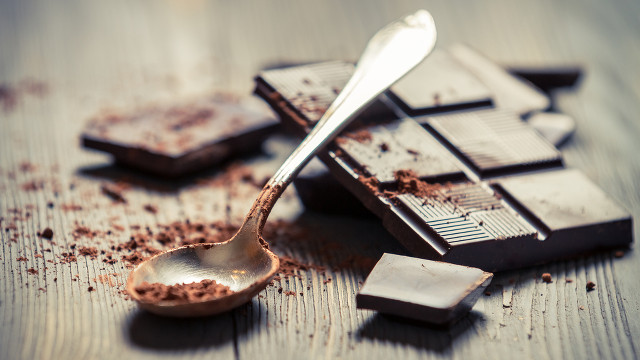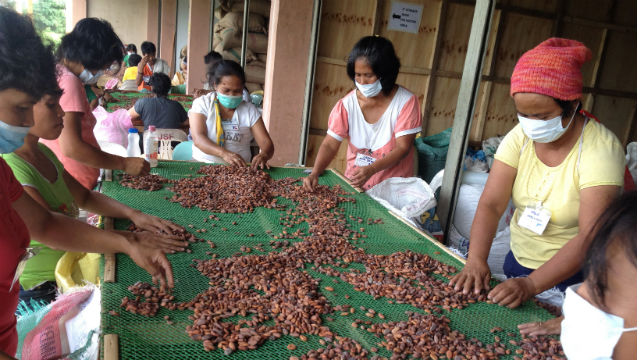SUMMARY
This is AI generated summarization, which may have errors. For context, always refer to the full article.

MANILA, Philippines – With global cacao production in decline, Mindanao may be well-placed to supply the world with the chocolate it needs, said Mindanao Development Authority Chairperson Luwalhati Antonino.
“We are trying to jumpstart [the] cacao industry in Mindanao because of the diminishing supply of cacao in the world market, and Mindanao has a very big chance to catch up to be a big supplier of cacao,” she said during a Malacañang press briefing on Wednesday, August 20.
Experts predict a one million metric ton (MT) shortage of cacao (also called cocoa) globally by 2020, Cocoa Foundation of the Philippines President Edward David told Rappler.
The Philippines currently produces from 10,000 to 12,000 MT of dried cacao beans – not even enough to satisfy the local demand of 30,000 MT.
Though the country’s contribution to the global market is miniscule, the Philippines is already exporting cacao to the United States, Singapore, New Zealand and Europe. Chocolate from Philippine cacao beans is used by major chocolate brands including Mars, M&M’s and Barry Callebaut.
The Department of Agriculture (DA) aims to raise local production to 100,000 MT by 2020, an amount that will enable the Philippines to make a dent in the global market, said Robert Crisostomo, general manager of cacao exporting company Casco Commodities.
Still, this is far from Indonesia’s output of 500,000 MT yearly, making it the 3rd largest cacao producer in the world after African countries Ivory Coast and Ghana.
Cacao tree-planting feat
To achieve their vision for Mindanao, Antonino said the planting of one million cacao trees in the region will be part of a goal to beat a tree-planting record set by India.
“India has a record of 1.9 million trees planted in one hour and we aim to plant 4.6 million trees in an hour on September 26, one million of which will be cacao,” she announced.
Mindanao currently devotes 2 million hectares of land to coconut trees which are ideal for intercropping with cacao trees since they provide the shade cacao seedlings need to thrive.
Using even just 5% of these lands would mean 100,000 hectares of cacao with a potential to create 1,000 jobs for Mindanao residents, she said.

Crisostomo estimated that to reach the 100,000 MT of dried cacao beans by 2020, the Philippines would need to harvest from around 100 million cacao trees.
He said Mindanao may be well-suited for this burgeoning industry because of its large tracts of fertile and unutilized soil.
He himself, under Casco Commodities, supplies cacao to the world’s largest chocolate manufacturer Barry Callebaut from cacao plantations in Davao.
Davao Region is the biggest local player producing 77% of the country’s total production from 2008 to 2012, according to the Philippine Statistics Authority – Bureau of Agricultural Statistics.
Gov’t investment in chocolate
To boost Mindanao’s promising cacao industry, the DA plans to make sizable investments particularly in Davao.
Cacao was chosen as a priority commodity of Davao Region (Region 11) by the DA. This means funds from the World Bank-assisted Philippine Rural Development Program (PRDP) will go to strengthening the industry around the crop.
“Once approved by PRDP, we are targeting the idle areas of San Isidro, Kapalong, and Asuncion for the proposed expansion of 4,000 hectares in cacao plantation,” said DA Region 11 Director Remelyn Recoter.
The DA also plans to improve cacao farmers’ access to fertilizer and high-yielding varieties of cacao seeds.
The agency promised to improve the flow and quality of extension services to cacao farmers to help them adopt good practices and produce high-quality beans.
According to DA data, cacao is also grown in Luzon (Ilocos, Bulacan, Laguna, among others) and Visayas (Camarines Sur and Norte, Iloilo, Bohol, Negros Occidental, among others).
The Philippines in general is a good place to grow cacao because it is on the Equator, the only part of the world where cacao can grow. – Rappler.com
Cocoa powder and dark chocolate image from Shutterstock
Add a comment
How does this make you feel?
There are no comments yet. Add your comment to start the conversation.